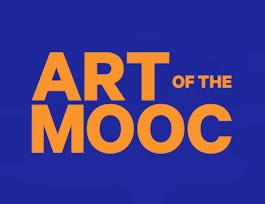The course will explore the tone combinations that humans consider consonant or dissonant, the scales we use, and the emotions music elicits, all of which provide a rich set of data for exploring music and auditory aesthetics in a biological framework. Analyses of speech and musical databases are consistent with the idea that the chromatic scale (the set of tones used by humans to create music), consonance and dissonance, worldwide preferences for a few dozen scales from the billions that are possible, and the emotions elicited by music in different cultures all stem from the relative similarity of musical tonalities and the characteristics of voiced (tonal) speech. Like the phenomenology of visual perception, these aspects of auditory perception appear to have arisen from the need to contend with sensory stimuli that are inherently unable to specify their physical sources, leading to the evolution of a common strategy to deal with this fundamental challenge.



Music as Biology: What We Like to Hear and Why

Instructor: Dale Purves
Sponsored by Coursera Learning Team
67,152 already enrolled
(699 reviews)
Skills you'll gain
Details to know

Add to your LinkedIn profile
7 assignments
See how employees at top companies are mastering in-demand skills


Earn a career certificate
Add this credential to your LinkedIn profile, resume, or CV
Share it on social media and in your performance review

There are 8 modules in this course
Introduction to Music as Biology
What's included
1 video1 reading1 discussion prompt
An overview of the organization of the human auditory system, and how sound signals are transformed into sound stimuli.
What's included
4 videos2 readings1 assignment4 discussion prompts
An introduction to the sound qualities we perceive, and how and why these qualities differ from the information in sound signals.
What's included
5 videos1 reading1 assignment2 discussion prompts
A discussion of the nature of vocal sound signals, their biological importance and their role in understanding music.
What's included
5 videos1 reading1 assignment3 discussion prompts
The tonal phenomena that need to be explained in any theory of music, and different approaches that have been take to provide answers.
What's included
9 videos1 reading1 assignment3 discussion prompts
Why a small number of basic scales are used in music worldwide, and how a biological framework explains this and related puzzles.
What's included
6 videos1 reading1 assignment3 discussion prompts
How emotion is conveyed by vocal similarity in music across cultures, and how the speech of a culture and its music are related. A summing up of the major points in the course follows.
What's included
7 videos3 readings2 assignments4 discussion prompts
Additional demonstrations and commentaries by Ruby Froom on some of the musical issues considered in the course, as well as a glossary of terms and bibliography for references.
What's included
6 videos16 readings
Instructor

Offered by
Why people choose Coursera for their career




Learner reviews
699 reviews
- 5 stars
57.65%
- 4 stars
24.74%
- 3 stars
12.16%
- 2 stars
3.43%
- 1 star
2%
Showing 3 of 699
Reviewed on Sep 21, 2016
This course has helped me to understand biological psychology of humans towards music. Based on this knowledge i am confident to create music which will seem good to the ears of humans.
Reviewed on Nov 21, 2020
I enjoyed this course. It made me appreciate music more as it relates to our emotions etc. Thank you to all the lecturers who were instrumental in putting this course.
Reviewed on Mar 13, 2017
Natural scientific approach to music; this is definitely a new perspective on music and acoustics in general.
Recommended if you're interested in Health

Duke University

Berklee

Curtis Institute of Music

Berklee

Open new doors with Coursera Plus
Unlimited access to 10,000+ world-class courses, hands-on projects, and job-ready certificate programs - all included in your subscription
Advance your career with an online degree
Earn a degree from world-class universities - 100% online
Join over 3,400 global companies that choose Coursera for Business
Upskill your employees to excel in the digital economy


